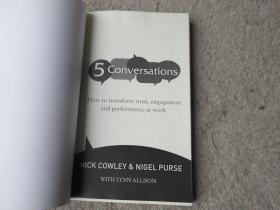Content:
Introduction: Fishing for alligators can be an exciting and challenging endeavor. While it is not a common practice, there are anglers who enjoy the thrill of targeting these unique creatures. Catching a gator while fishing requires a combination of skill, patience, and understanding of the alligator's behavior. In this article, we will delve into the techniques and methods that can help you increase your chances of successfully catching a gator while fishing.

Understanding Alligator Behavior: Before you embark on your gator fishing adventure, it is crucial to understand the behavior of these reptiles. Alligators are primarily ambush predators, meaning they lie in wait for their prey to come close before striking. They are most active during dawn and dusk, so these are the best times to fish for them. Additionally, alligators are more likely to be found in areas with abundant food sources, such as marshes, swamps, and slow-moving rivers.
Choosing the Right Equipment: To catch an alligator, you will need the right equipment. Here are some essential items to consider:
- Rod and Reel: A heavy-duty rod and reel combination is necessary to handle the powerful pull of an alligator. A rod with a minimum of 8 to 10 feet in length and a powerful drag system is ideal.
- Line: Use a monofilament line with a breaking strength of at least 50 pounds. Some anglers prefer braided line for its strength and sensitivity.
- Hooks: Large, strong hooks are essential. J hooks in sizes 6/0 to 8/0 are commonly used for alligator fishing.
- Bait: Live bait, such as chickens, ducks, or fish, is the most effective. However, you can also use cut bait or artificial lures if live bait is not available.
Selecting the Right Location: To increase your chances of catching a gator, choose a location with the following characteristics:
- Abundance of Alligators: Research areas known for high alligator populations, such as national wildlife refuges, state parks, or private fishing clubs.
- Suitable Habitat: Look for areas with slow-moving water, abundant vegetation, and plenty of fish or other prey.
- Accessibility: Ensure that the location is accessible for your fishing setup and that you have permission to fish there.
Techniques for Catching Alligators: Here are some effective techniques for catching alligators while fishing:
- Cast and Wait: Cast your bait into the water and wait for a gator to notice it. Alligators are patient predators, so be prepared to wait for an extended period.
- Jigging: Jigging can be an effective technique, especially when using artificial lures. Move the lure in a slow, erratic motion to mimic struggling prey.
- Trolling: Trolling can be a productive method, especially in larger bodies of water. Attach your bait to a heavy-duty fishing line and slowly drag it through the water.
- Live Bait: Live bait is the most effective method for catching alligators. Attach the bait to your hook and let it drift naturally. Alligators are more likely to strike at live bait that appears to be struggling.
Safety Precautions: Fishing for alligators can be dangerous, so it is essential to take safety precautions:
- Always wear a life jacket, especially if you are fishing from a boat.
- Use a gator-proof vest or waders to protect yourself from bites.
- Avoid entering the water when fishing for alligators, as they can be unpredictable and aggressive.
- Keep your distance from the alligator once it has taken the bait. Do not try to touch or handle the gator.
Conclusion: Catching an alligator while fishing is a unique and thrilling experience that requires patience, skill, and understanding of the alligator's behavior. By using the right equipment, selecting the appropriate location, and employing effective techniques, you can increase your chances of success. However, always prioritize safety and be prepared for the unpredictable nature of these fascinating creatures. Happy gator fishing!












